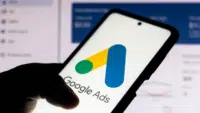Five tips for using Google Ads retargeting with email, organic traffic, cross-device tracking, direct mail, and social media.
Today’s buyers have thousands of options to choose from and hundreds of companies competing for their attention. Running an ad and expecting consumers to go directly to purchase isn’t a viable option. It’s entirely obsolete.
A much more effective strategy is to retarget and nurture. The goal is to stay top of mind with your target audience until they’re ready to make a purchase.
When used strategically, retargeting and nurturing increase brand search and direct traffic, ultimately driving conversions and business growth.
Let’s take a look at how this all works together.
What is Google retargeting?
Retargeting is a method that uses Google Ads to bring users back to your website after they’ve taken a certain action, such as visiting the site from another channel (i.e., SEO) or engaging with an ad previously.
Display retargeting ads are the most common type. There are two primary formats: uploaded display ads and Google’s responsive display ads.
- Uploaded display ads are ads that you create in GIF, JPEG, or HTML5 format.
- Google’s responsive display ads are created in your Google Ads account.
Other ad retargeting format options include video, app, and search ads or specifically targeting visitors who have completed a certain action on your website.
One popular variation of a display ad looks like this:
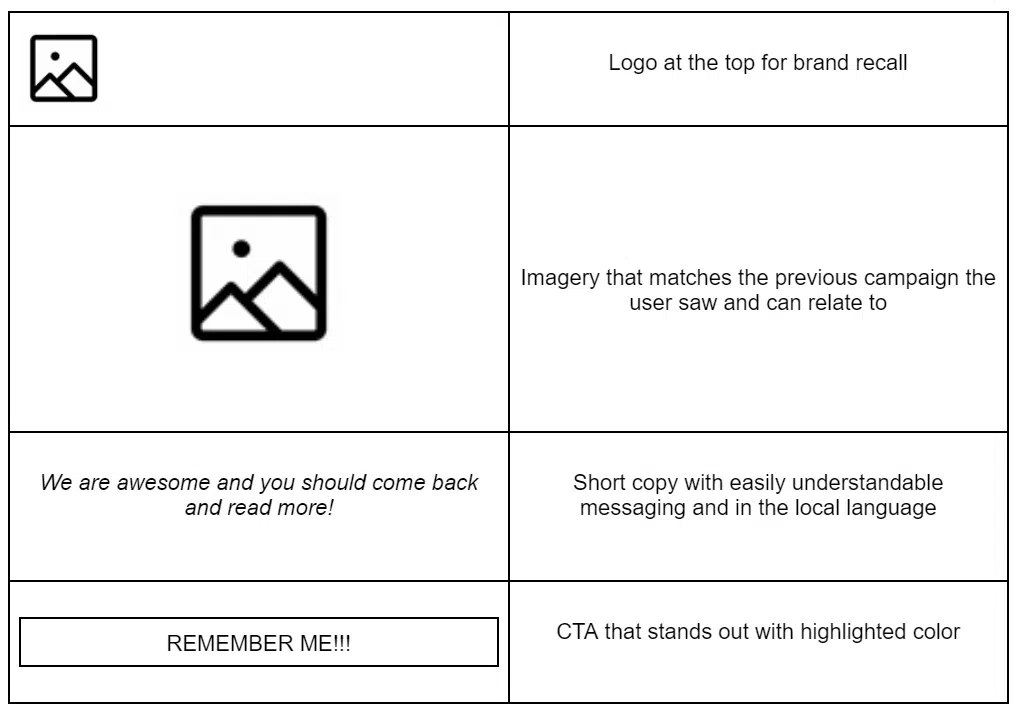
How does retargeting relate to the buyer journey?
Many people get hung up on the idea that retargeting ads (especially display ads) must generate direct conversion (or even clicks) to be worth the investment. When they don’t, businesses turn them off because they think they’re a waste of money.
But direct conversions aren’t the purpose of retargeting ads. Rather, they maintain awareness for a specific product or service after a user has shown interest in it. Retargeting ads nurture those who engaged toward conversion.
They keep your brand top-of-mind or incentivize a purchase with an offer such as a discount (ecommerce) or extended free trial (B2B). Then, in the future, when the user is ready to make a purchase, they’re more likely to come directly to your website rather than clicking on another retargeting ad.
Remarketing is essential for your PPC campaigns because they:
- Bring users who have abandoned carts back to complete purchases (which can be as high as 98% depending on the industry).
- Increase brand searches, which majorly affects conversions.
- Incentivize customers to make a final purchase decision due to a discount or special offer.
- Drive awareness and consideration among new audiences, expanding the ROI potential of your campaigns.
- Encourage brand loyalty by engaging with former customers to generate new purchases and upsells.
So even though retargeting ads require investment to your PPC campaign spend, the ROI can be tremendous.
5 methods to combine Google Ads with other channels to retarget, nurture, and convert
While retargeting ads are great, they’re just one piece of the nurturing puzzle.
To create a more holistic strategy, you can use Google Ads in several different ways in combination with retargeting ads to drive conversions and brand visibility. Here are some methods I’d suggest trying.
1. Google Ads with email marketing retargeting
Create targeted email campaigns that correspond with Google Ads retargeting. Send follow-up emails to users who have opted in to receive email marketing updates, as well as who have interacted with your ads or website, but haven’t converted.
Example
A user visits your ecommerce site and looks at a particular product. You can retarget them with a Google Ad displaying the same product while simultaneously sending an email offering a discount on that product, reminding them of their interest. This method is particularly effective for generating purchases among previous customers.
Such a retargeting email might look something like this:
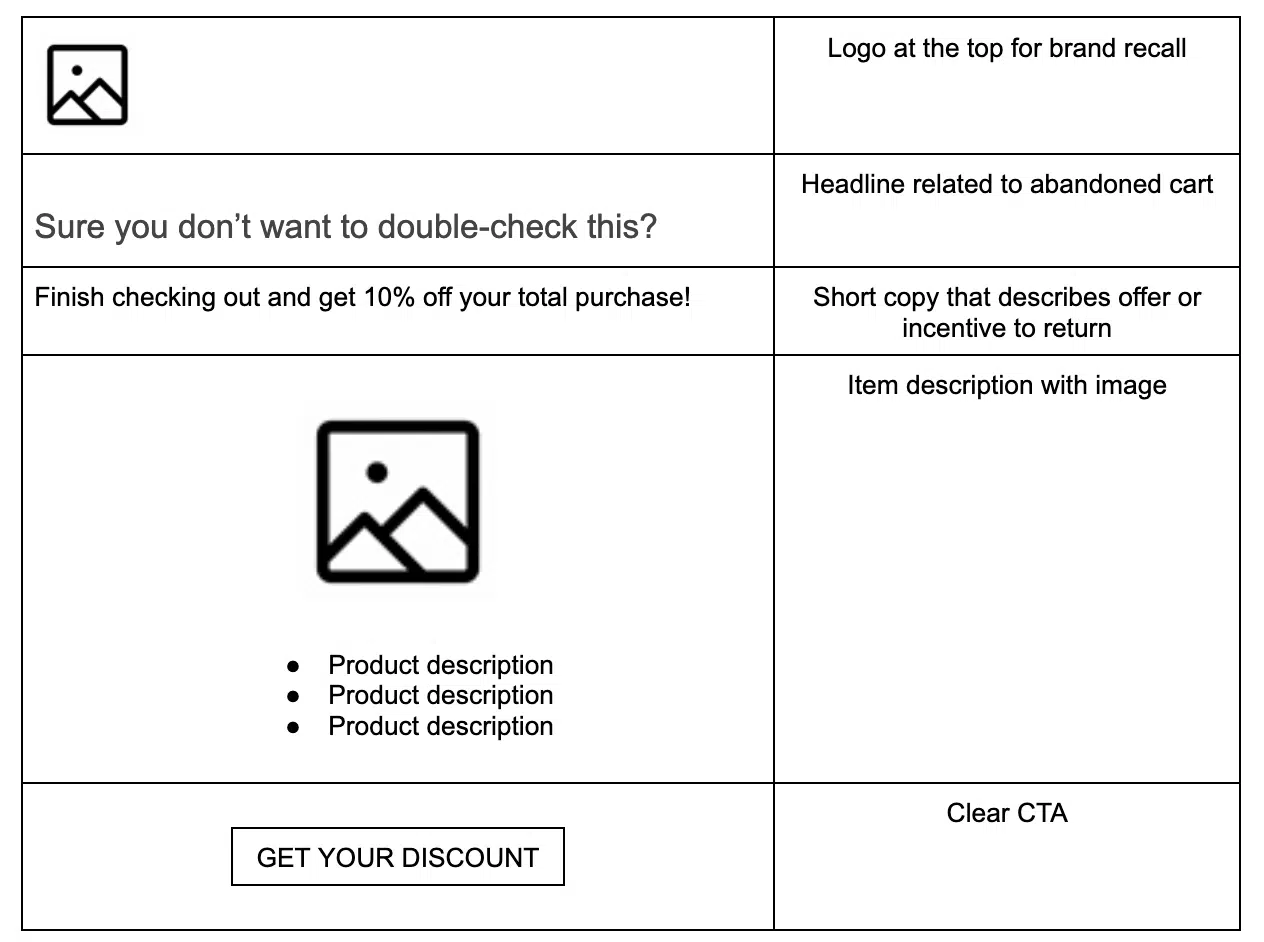
2. Organic traffic with Google Ads retargeting
Combine your content marketing efforts with Google Ads. You can do this by retargeting users who engage with specific content pieces from organic search, such as blog posts or videos, with relevant ads on third-party websites that the user views.
Example
Say a user reads a blog post about “best camping gear” on your website but doesn’t buy anything. You can then retarget them with a retargeting Google Ad for a camping gear sale, driving them to make a purchase.
The retargeting ad likely appears something like this:
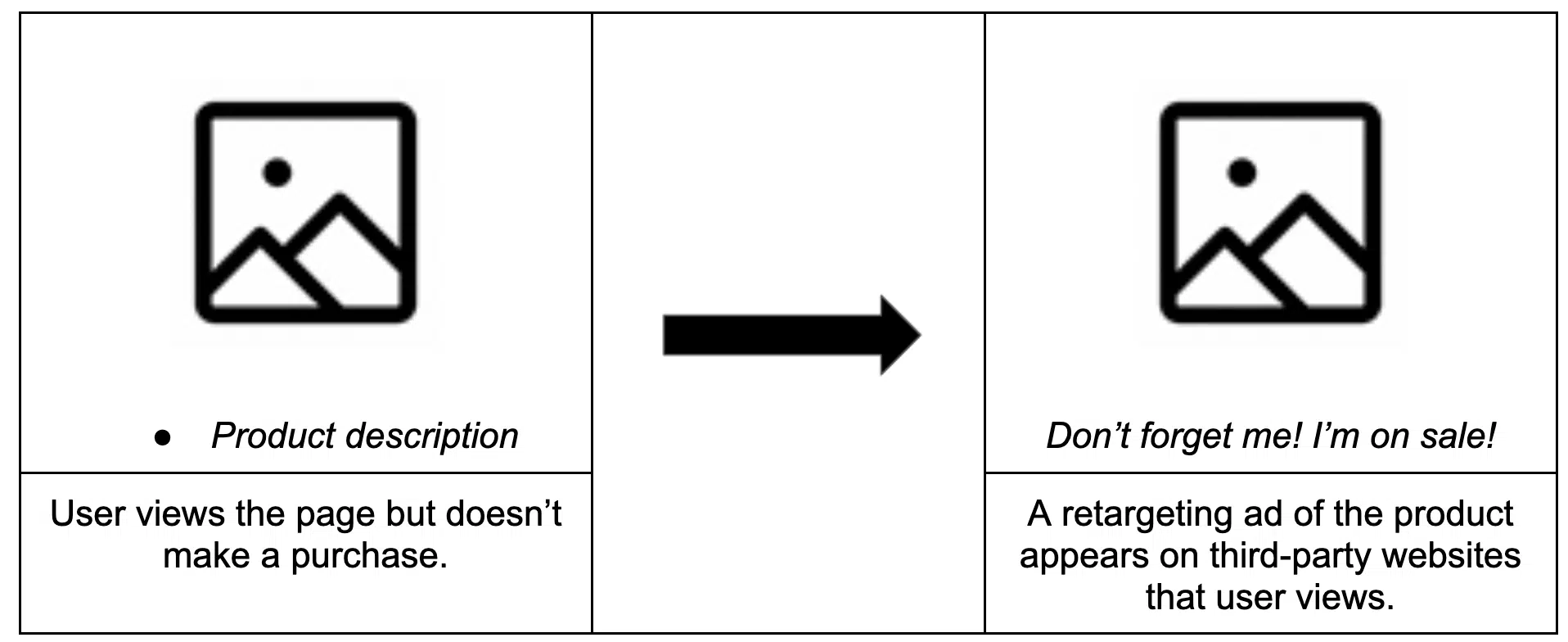
3. Google Ads to cross-device and cross-platform retargeting
Implement cross-device and cross-platform retargeting by tracking user behavior across different devices and channels to create a cohesive user experience.
Example
A user explores your travel website on their mobile device during their lunch break, so you implement retargeting ads so that they later see a Google Ad on their laptop while browsing other websites.
Maybe this ad offers a special discount for the destination they were researching, which ties together the two experiences and further drives conversions.
These types of ads span across many channels in a wide array of formats, including:
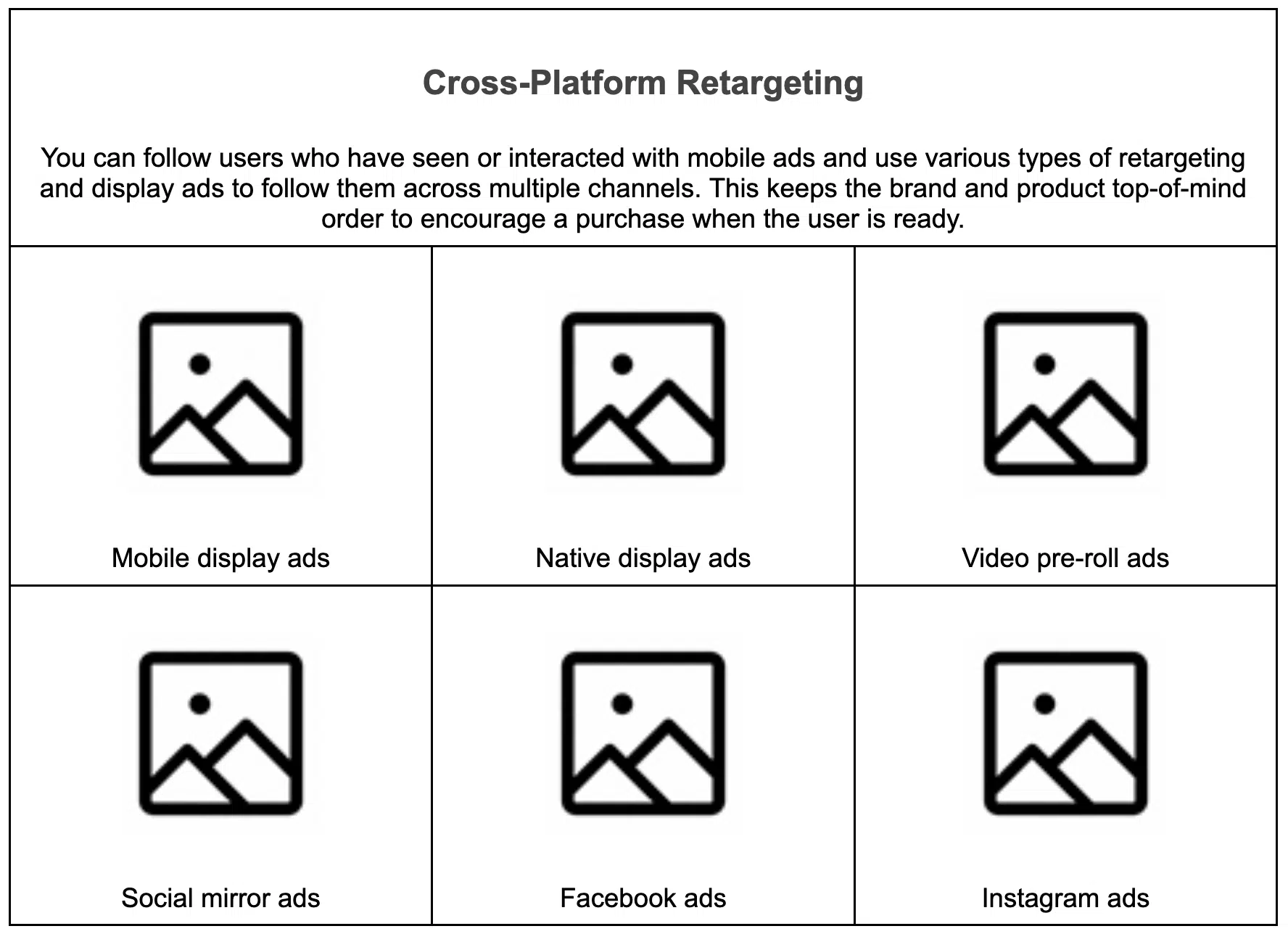
4. Offline marketing to Google Ads retargeting
Combine traditional offline marketing with online retargeting, such as with direct mail. You can build and use custom landing pages in Google Ads for users who receive direct mail pieces, which create a sense of personalization.
Example
You send a direct mail postcard advertising your new restaurant’s grand opening. Include a unique URL or QR code redirecting them to a Google Ad landing page.
The landing page can offer an exclusive “first-taste” discount. This online component captures user data and helps convert recipients who engage with the postcard.
Here’s a quick visual overview of the process:

5. Google Ads with social media retargeting
Use platforms like Facebook or Instagram to retarget users based on their interactions with your Google Ads to ensure consistent messaging and multiple touchpoints.
Example
A user clicks on your Google Ad for a fitness app but doesn’t sign up. You can retarget them with a similar ad on Facebook, highlighting the app’s benefits and offering a free trial.
This type of retargeting ad might look like this:
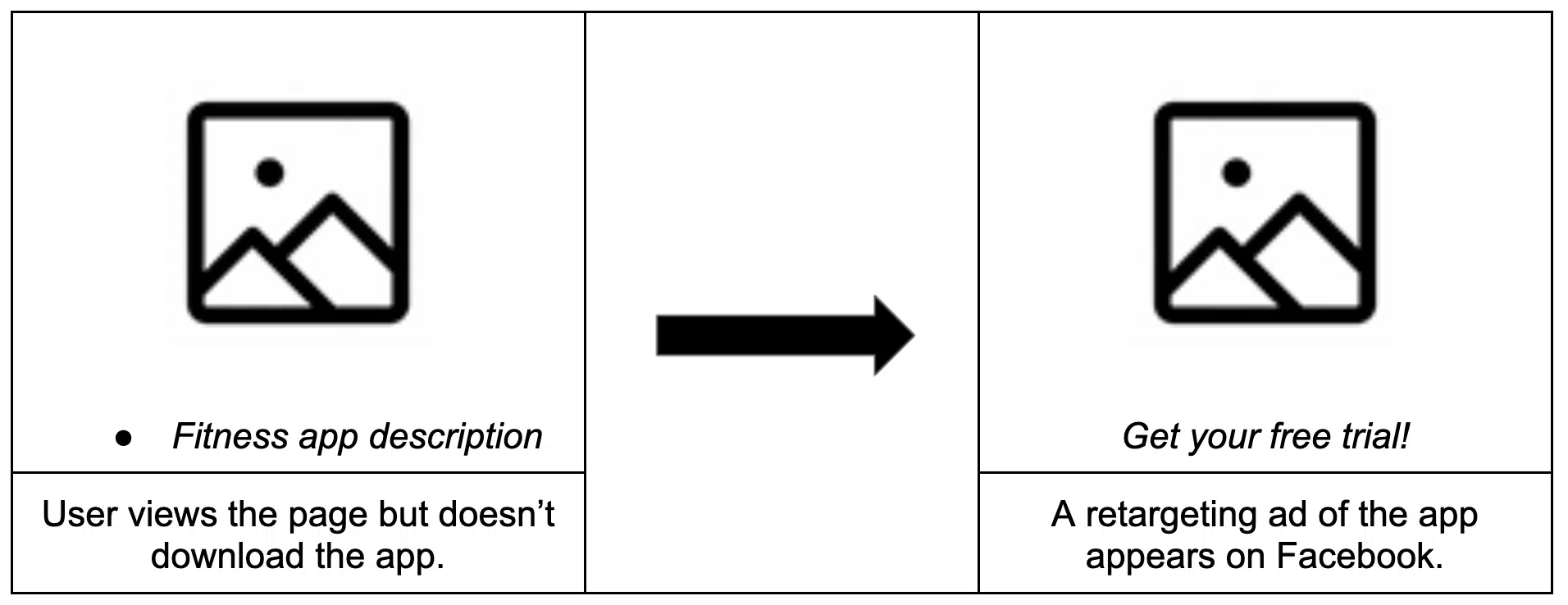
Help guide customer actions to drive conversions
With retargeting, you can effectively nurture and convert users by leveraging Google Ads with various marketing channels.
The key is to maintain a cohesive and consistent message across all touchpoints, ensuring that users receive the right message at the right time to encourage conversion. Whether they’ve abandoned their cart or keep ending up on your website, retargeting ads help you drive conversions and increase PPC ROI.


